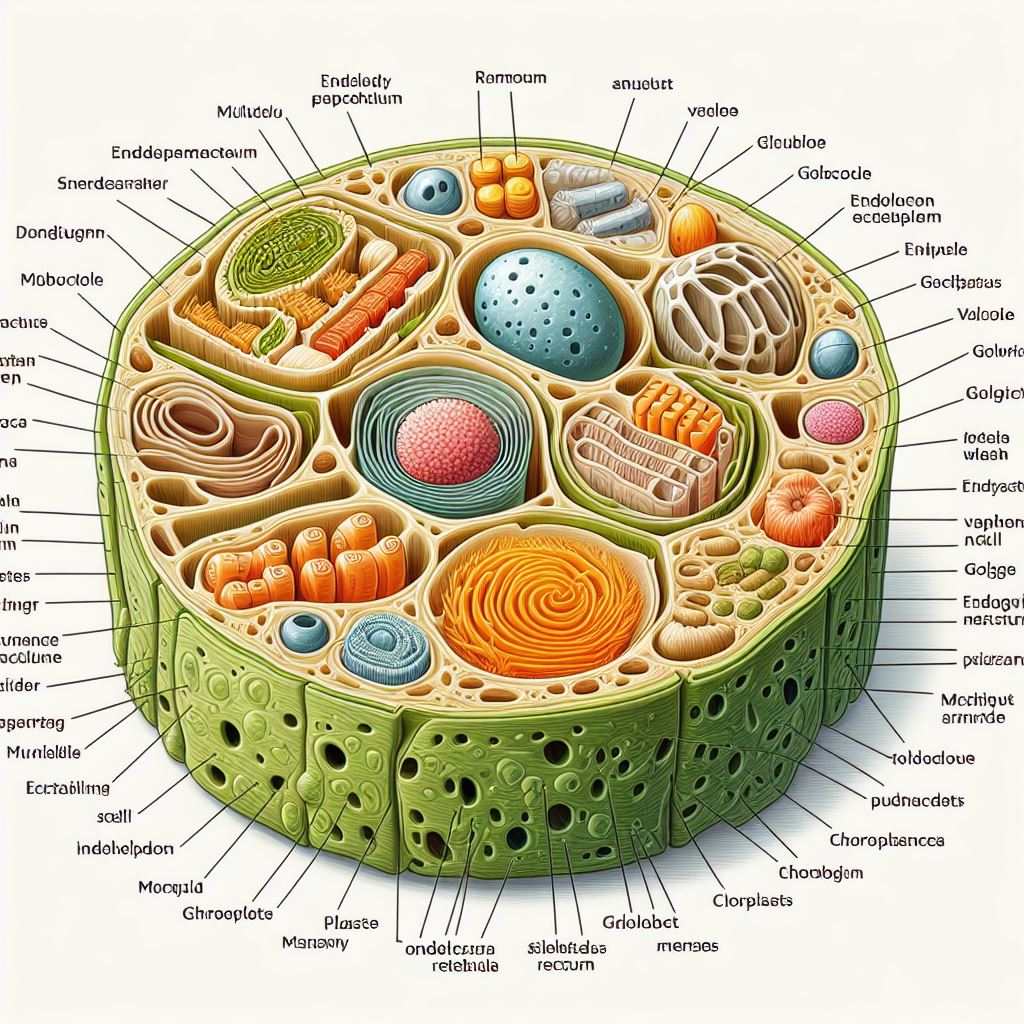Every cell has four main parts:
- Plasma membrane: This is the outer layer that holds the cell together and separates it from outside stuff. It’s made of fats and proteins.
- Cytoplasm: This is the space inside the cell between the DNA and the plasma membrane. It’s like a jelly where all the cell’s activities happen.
- DNA: This is the material that carries all the information for how the cell works and passes on traits. In cells with a nucleus, like plant and animal cells, it’s found inside the nucleus. In simpler cells without a nucleus, it’s in a place called the nucleoid.
- Ribosomes: These are tiny machines inside the cell that make proteins. Proteins are important for lots of cell processes.
These parts can be seen in the above picture of a plant cell.
Animal cells and plant cells are similar in many ways because both are eukaryotic cells, meaning they have a nucleus and organelles bound to membranes. There are, however, some key differences between plant cells and animal cells:
- Plant cells have a cell wall that surrounds their membrane, providing extra support and protection. There is no cell wall in animal cells.
- Photosynthesis occurs when plants convert light energy into chemical energy by using chloroplasts, which are organelles found in plant cells. Chloroplasts are not found in animal cells.
- There is usually a large central vacuole in plant cells, which is a fluid-filled organelle that stores water, enzymes, and other substances. There is no central vacuole in animal cells.
- The size of plant cells is generally larger than that of animal cells.
- Plant cells can have any shape, but they are usually rectangular or square. The shape of animal cells is usually round or oval.
Plant cells are usually square or rectangular, while animal cells are round or irregular. Plant cells have a cell wall, but animal cells do not. Both plant and animal cells have a plasma membrane, endoplasmic reticulum, nucleus, Golgi apparatus, cytoplasm, and ribosomes. The nucleus in plant cells is on one side, but it’s in the center in animal cells. Lysosomes are rare in plant cells but common in animal cells. Plant cells have plastids and usually one large vacuole, while animal cells do not have plastids and have many small vacuoles. Cilia are absent in plant cells but often found in animal cells. Plant cells have fewer mitochondria compared to animal cells. Lastly, plant cells usually make their own food, while animal cells get food from other sources.





